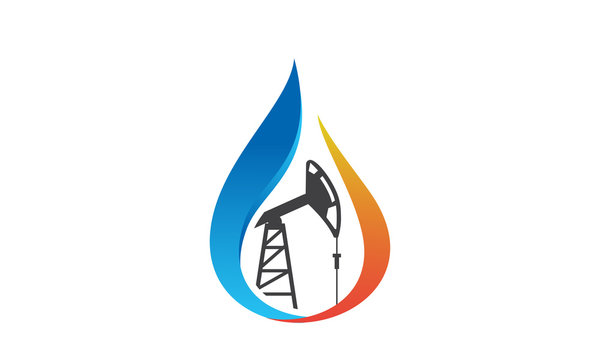Training Beam (sucker rod pump)
OBJECTIVES :
This course is to summarize the state of the art of sucker rod pump technology. It included the example problems to illustrate the use of various theoretical solutions, it also listed an overview of conventional well productivity and Inflow Performance Relationship (IPR) technology and is general introduction to the latest methods of production optimization using sucker rod pump technology. Ever sinceAugust 29, 1859, When Colonel Drake discovered oil inTitusville,Pennsylvania, man has been trying to lift oil from non-flowing wells through some artificial method. Unfortunately, regardless the method selected, we seem to do it very inefficiently most of the time. Since the Drake discovery, the equipment available for this purpose has improved tremendously. And so has the technology to our best advantage. The truth is that we waist millions each year in the initial installation and subsequent repair and maintenance of artificial lift equipment that was the wrong type for the particular well from beginning. Designing a sucker rod pump installation is not an exact science; it is mostly an art. But it is a talent which can be easily acquired if care and attention are paid to what the well is telling us, and what we want to do with the well. The well conditions vary from one well to other, but the basic information required for a design does not. What we require from a particular well must, of course, be within the limits of the well in question. Sucker rod pump design provided information required for analyzing the behavior of a productivity well interval using rod pump. This thus makes it possible to answer some fundamental questions:
- What is the well producing capacity?
- What fluids do they produce?
- At what flow rates?
- What is the rod pump to use?
In this course, it has also included example problems to illustrate the use of various theoretical solution. Wherever possible, it has not only discussed practical difficulties that one may encounter while using the theoretical solutions, but it has also listed some of the method that one can used to obtain the desired information. It also included descriptions on field histories wherever they were available and trouble shooting using sucker rod pump. This course is mainly directed to the practicing professionals who make engineering calculations and decision on sucker rod pump application. For managers, the course helps to review the present state of the art. It also outlined some of new method in artificial technology that exist today. These gaps in technology will be useful for research engineers and research professionals to determine the areas of future research.
AUDIENCE:
No specified (Operator/Sr. Operator/Engineer or Non Engineer)
COURSE OUTLINE
INTRODUCTION
- The Origine of Petroleum
- Basic Exploration
- Basic Drilling and Completion
- Basic Production Engineering
ARTIFICIAL LIFT METHOD
- The Sucker Rod Pump
- The Hydraulic Pump
- The Submersible Pump
- Gas Lift
- Free Piston Lift
DETERMINING THE BEST METHOD FOR THE WELL
- Lease Considerations
- Well and Reservoir Analysis
- Equipment Parameters
- Conclusion
THE SUCKER ROD PUMP LIFTING METHOD
- Background And History
- Sucker Rod Pumping
- The Pumping Unit
- The Wellhead
- The Polished Rod
- The Sucker Rod
- The Sucker Rod Pump
SUCKER ROD PUMP CLASSIFICATIONS
- API Pump
- API Pump Designations
- Tubing Pumps
- Traveling Barrel,Bottom Hold-Down Insert Pumps
- Stationary Barrel,Bottom Hold-Down Insert Pumps
- Stationary Barrel,Top Hold-Down Insert Pumps
- Stationary Barrel,Top And Hold-down Insert Pump
- Special Pumps
- The Axelson ”VOLUMAX”
- The Axelson “SAN’PUMP”
- The Axelson “TRIAX”
- The Axelson ”HOLLOW TUBE”
- The Axelson ”CIRCLE-A”
- Pump Parts And Fittings
- Barrel Tubes
- Cages
- Plungers
- The Axelson “Ring Valve”
- Balls and Seats
- Other Fittings
DESIGNING THE INSTALLATION
- Analsys Of The Well
- Selecting The Subsurfaces Oil Well Pump
- Determining The Pump Bore Size
- Choosing The Pump Type
- Selection of Materials
- Beam Pumping
- The Dynamometer Card
- Determining Favorable Pumping Speeds
- Establishing Production Rates
- Peak Polished Rod Loads
- Maximum Rod Stress
- Minimum Polished Rod Load
- PolishedRodLoadRange
- Peak Torque
- Polished Rod Horsepower
- Pump And Rod Installation Design
- Plunger Slippage And Fits
- Designing the Sucker Rod String
- Specific Information Required
- Sucker Rod String Design Charts
- The Rod String Load Ratio
- Sucker Rod Couplings
- Sucker Rod Coupling Displacement
- The Inhibitor Program
INSTALLATION, OPERATING AND TROUBLE SHOOTING THE PUMP
TRAINING METHOD
Interactive Methods, Presentations, Discussions
TRAINER
CITRA INTI TRAINING consultant team
DURATION OF TRAINING
3 days (effective 21th hours )
INVESTMENT TRAINING (Excluding Accommodation) :
- IDR 9.500.000,-/participant (Jakarta)
- IDR 9.500.000-/participant (Bandung)
- IDR 9.500.000,-/participant (Yogyakarta)
- IDR 11.000.000,-/participant (Bali)
- IDR 11.000.000,-/participant (Lombok)
- US$ 2.780/participant (Malaysia)
Webinar via zoom atau aplikasi lain yang disepakati
Rp 7.500.000 / participant
Inhouse Training :
- Melalui pengajuan proposal kami berisikan beberapa ketentuan yg disepakati oleh kedua belah pihak.
- Nilai investasi training lebih murah
Quota minimal peserta :
- Offline / tatap muka : 2 – 3 peserta
- Online / webinar : 1 – 2 peserta
- Inhouse Training : 5 – 10 peserta
Keterangan lain :
Jadwal dan lokasi training bersifat fleksibel, dapat disesuaikan melalui kesepakan peserta.
FASILITAS
Training Offline / Tatap muka :
- Sertifkat, Modul + Soft Copy, Training Kit, Lunch, Coffee Break, Jaket/tas dan diselenggarakan di hotel berbintang
Training Online / Webinar via zoom atau aplikasi lain :
- Sertifkat, Modul Soft Copy
INFORMASI DAN PROMO (WA)
|
CONTACT PERSON (SMS Center) dan WA
|
E – mail & Web site :
JADWAL TRAINING TAHUN 2025 :
Januari
|
Februari
|
Maret
|
April
|
Mei
|
Juni
|
Juli
|
Agustus
|
September
|
Oktober
|
November
|
Desember
|
Link Pendaftaran : bit.ly/FormRegistrasiCIT

